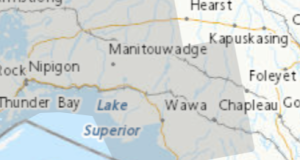With the release of the second issue in the From Far and Wide series, Canada Post once again invites you to take a fantasy trip to some of the most amazing and picturesque places in Canada.
According to stamp designer Stéphane Huot, it’s a privilege to work on a stamp series over an extended period of time. He adds, “The challenge is to establish a design platform that can be repeated, but that can also evolve. In the ‘From Far and Wide’ series, the evolution is the result of the images chosen for the background of the souvenir sheet and a strong and distinctive color scheme that establishes the tone for the series.
As a definitive issue, From Far and Wide includes stamps denominated with domestic, U.S., international and oversized rates and is available in booklets and coils. Postcards featuring the stamp images are also available, as is a nine-stamp gummed souvenir sheet and souvenir sheet OFDC. Here are the 2019 must-see places:
Tombstone Territorial Park (Yukon) PermanentTM rate
Yukon’s Tombstone Territorial Park was established as the result of the Tr’ondëk Hwëch’in land claim agreement, and the park lies entirely within that First Nation’s traditional territory. The diverse landscape supports a variety of wildlife, including Dall sheep, caribou, moose, black and grizzly bears, and dozens of bird species.
Athabasca Falls, Jasper National Park (Alta.) PermanentTM rate
Athabasca Falls, in Alberta’s Jasper National Park, is one of the most powerful waterfalls in the Canadian Rockies due to the sheer volume of its flow. Fed by the Columbia Icefield, the 23-metre-high falls pour over hard quartzite and cut into the underlying limestone, carving potholes into the canyon below.
Quttinirpaaq National Park (Nunavut) PermanentTM rate
Nunavut’s isolated Quttinirpaaq (-pronounced “koo-tin-ear-paahk”) National Park is at the top of the world, as its Inuktitut name proclaims. Canada’s most northern national park boasts mountains, ice caps, glaciers, valleys and tundra that are home to muskoxen, Arctic wolves, Arctic hares, ptarmigan and the endangered Peary caribou.
Mahone Bay (N.S.) PermanentTM rate
Found on the west shore of Mahone Bay along Nova Scotia’s South Shore, the town of Mahone Bay was originally home to the Mi’kmaq people, which they called Mushamush. Known for its shipbuilding history, visitors flock there to find three heritage churches that form part of the seaside area’s eye-catching scenery.
Little Limestone Lake Provincial Park (Man.) PermanentTM rate
Little Limestone Lake Provincial Park, in north central Manitoba, is the world’s largest and most outstanding example of a marl lake. As the water temperature rises, the calcite separates and forms tiny crystals, which transform the lake from clear to an opaque turquoise or milky blue.
Castle Butte, Big Muddy Badlands (Sask.) single-stamp domestic rate
Castle Butte is a natural structure that was left behind in Saskatchewan’s Big Muddy Badlands after the last ice age. The well-known landmark stands at 60 metres high with a perimeter of half a kilometre.
Smoke Lake, Algonquin Provincial Park (Ont.) U.S. rate
Algonquin Provincial Park boasts a variety of natural, cultural and recreational features. Over the years, the province’s oldest provincial park has been enlarged eight times. Today, many visitors explore its hilly, rocky terrain, mixed forests and more than 2,000 lakes.
Mingan Archipelago National Park Reserve (Que.) oversized rate
Quebec’s Mingan Archipelago National Park Reserve is home to the largest concentration of ocean-sculpted monoliths in Canada. Following the last ice age, sediment and marine animal remains formed a sea floor of limestone in the St. Lawrence lowland, which was sculpted by continental drift and changing water levels into the Mingan islands and coastline.
Iceberg Alley near Ferryland (N.L.) international rate
The annual southbound drift of 10,000-year-old icebergs has brought tourist attention to Iceberg Alley – the route that icebergs travel from the coast of Labrador to the southeast shore of Newfoundland. The 1,800-nautical-mile journey down the Labrador Current to the Grand Banks and out into the Atlantic Ocean takes two to three years.
- Thunder Bay’s Sharon Badanai Wins $2.6 Million in October Thunder Bay 50/50 Draw - November 1, 2025
- Marathon – Statement on Scotiabank Closure - October 31, 2025
- Batchewana First Nation Supports Court Decision Reducing Legal Fees in Robinson Huron Treaty Annuities Case - October 30, 2025
 Wawa-news.com You can't hear the 'big picture'!
Wawa-news.com You can't hear the 'big picture'!
